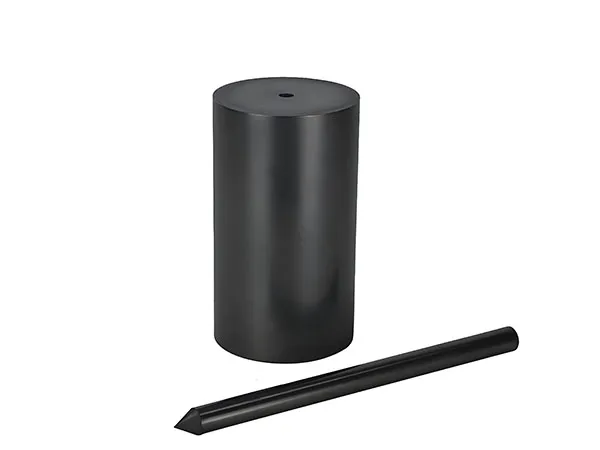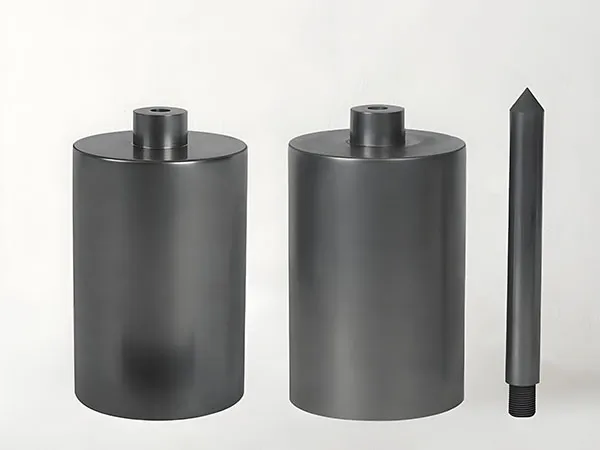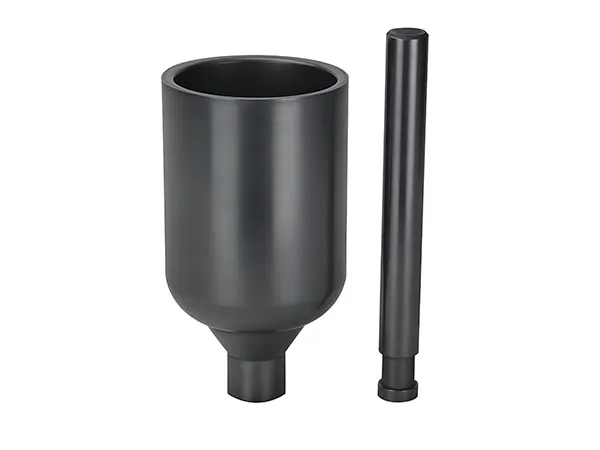Time: 2025-04-28 06:10:02 Source: Cangzhou Carbon Technology Co., Ltd.
Preventing graphite crucible cracking is crucial for safety, efficiency, and cost-effectiveness in high-temperature applications. Here's a comprehensive guide to minimize the risk.

Gentle Handling: Graphite is brittle. Avoid dropping, bumping, or subjecting the crucible to sudden impacts.
Use Correct Lifting Tools: Employ properly sized tongs or shanks designed for your crucible to ensure a secure grip and prevent mechanical stress. Preheat the tongs slightly to avoid thermal shock when gripping a hot crucible.
Avoid Rolling: Never roll a crucible on its side or base, as this can damage the protective glaze and the underlying material.
No Stacking Without Protection: If stacking is necessary, separate crucibles with cardboard or insulation material to prevent direct contact and abrasion.
Store Off the Floor: Place crucibles on pallets or a dry surface to prevent moisture absorption from the floor, which can lead to cracking upon heating.
Dry Environment: Store crucibles in a dry, well-ventilated area away from humidity to prevent moisture absorption.
Avoid Wedging: Do not tightly pack charge materials or tools inside the crucible, as expansion during heating can cause cracking.
Slow Initial Heating (Preheating): New crucibles, and even those stored for a while, must be preheated slowly to remove any absorbed moisture and temper the material. Follow the manufacturer's recommended preheating schedule, typically involving gradual temperature increases with holding periods.
Controlled Heating Rates: During operation, heat the furnace chamber gradually, especially during the initial stages. Rapid heating can cause uneven thermal expansion and lead to thermal shock. Aim for a heating rate of around 150°C per hour for the first 1-1.5 hours.
Avoid Rapid Cooling: Allow the crucible to cool down gradually after use. Avoid placing a hot crucible on a cold surface like concrete, as this sudden temperature change can cause cracking. Ideally, return the crucible to the furnace and allow it to cool slowly with the furnace.
Minimize Thermal Cycling: Reduce unnecessary temperature fluctuations, especially rapid ones, as they can induce stress on the crucible material. Maintaining a hot crucible through consecutive heating cycles can help minimize thermal stress.

Use Within Temperature Limits: Never exceed the crucible's maximum operating temperature.
Control Furnace Atmosphere: In fuel-fired furnaces, avoid direct flame impingement and excessive air, which can cause oxidation and damage the crucible. Ensure proper burner and crucible placement.
Correct Charge Loading: Load smaller charge materials first, then carefully lower heavier materials on top to cushion the impact. Avoid dropping heavy items directly into the crucible.
Flux Management: Minimize flux usage and add it only after the metal is fully molten to prevent chemical attack on the crucible material.
Avoid Allowing Metal to Freeze: Do not let the molten metal solidify inside the crucible, as the expansion during solidification can cause cracking.
Careful Metal Removal: When removing molten metal, use a ladle or spoon to scoop it out and minimize the use of tongs or calipers that could apply excessive force to the crucible walls.
Use a Suitable Base: Ensure the crucible is placed on a correctly sized base that provides adequate support. The wrong base height in fuel-fired furnaces can lead to overheating.
Maintain Sufficient Clearance: Ensure adequate space between the crucible and the furnace walls and top to allow for thermal expansion.

Pre-Use Inspection: Before each use, thoroughly inspect the crucible for any visible cracks, chips, or signs of wear. Do not use a damaged crucible. An auditory test (a ringing sound indicates integrity, while a dull sound may suggest a crack) can also be helpful.
Clean After Use: After each use, carefully remove any residual slag or metal, preferably while the crucible is still warm (but handle with caution and appropriate PPE). Avoid aggressive scraping that could damage the crucible surface.
Consider Protective Coatings: Applying protective coatings like boron nitride can enhance the crucible's resistance to chemical reactions and minimize metal adhesion, potentially extending its lifespan.
By adhering to these guidelines for handling, storage, heating, usage, and maintenance, you can significantly reduce the likelihood of graphite crucible cracking and maximize its service life.